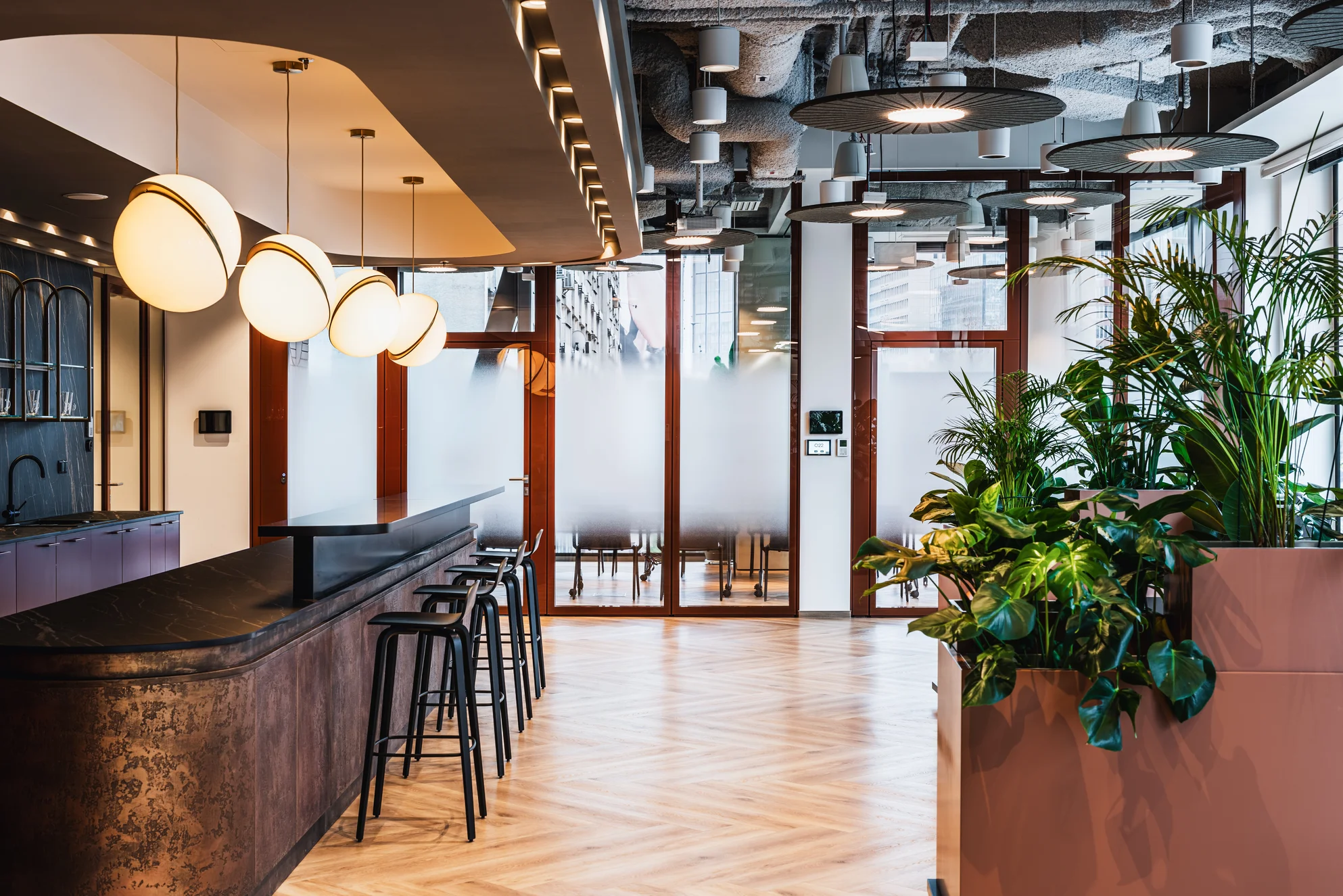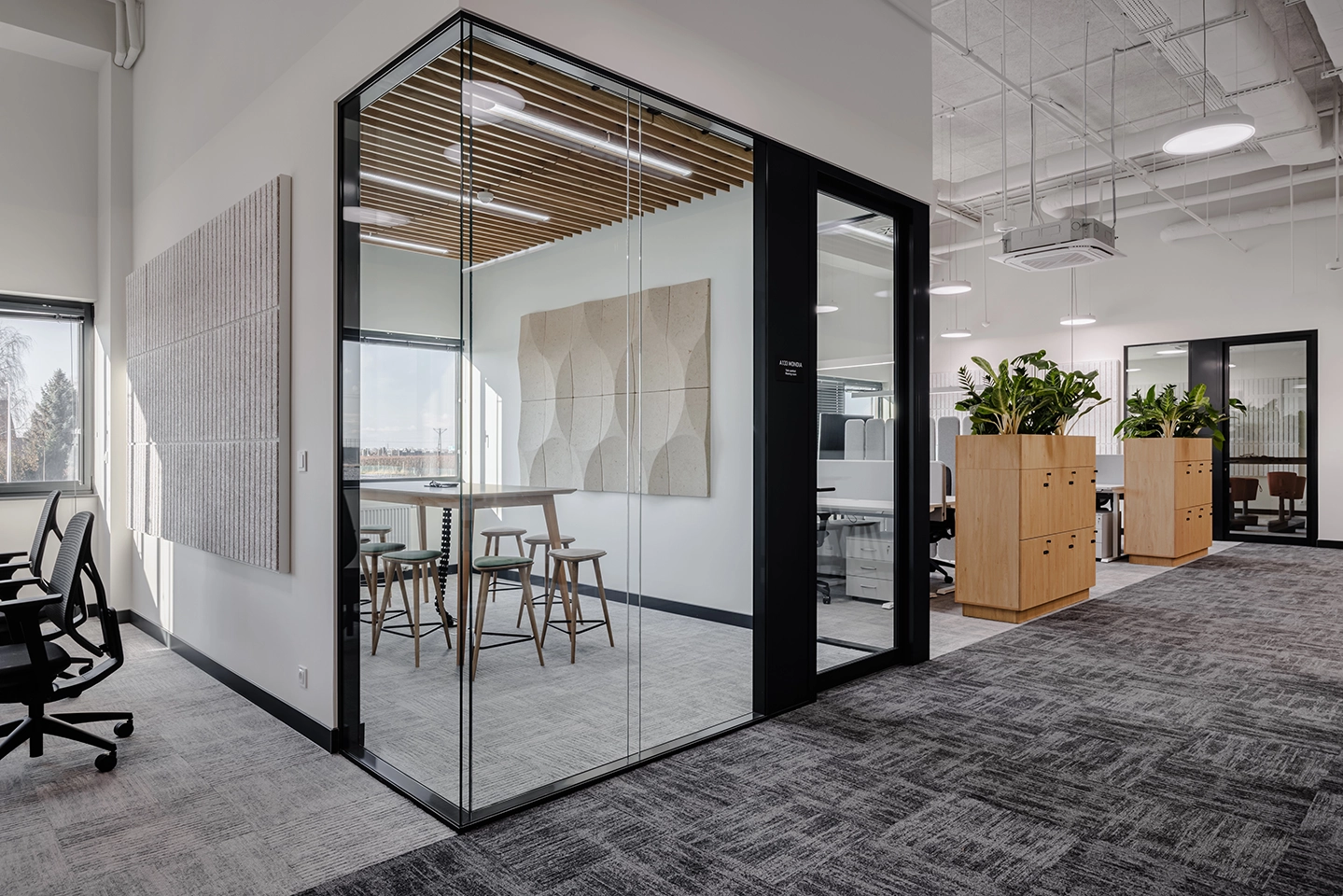Przestrzeń przyjazna każdemu
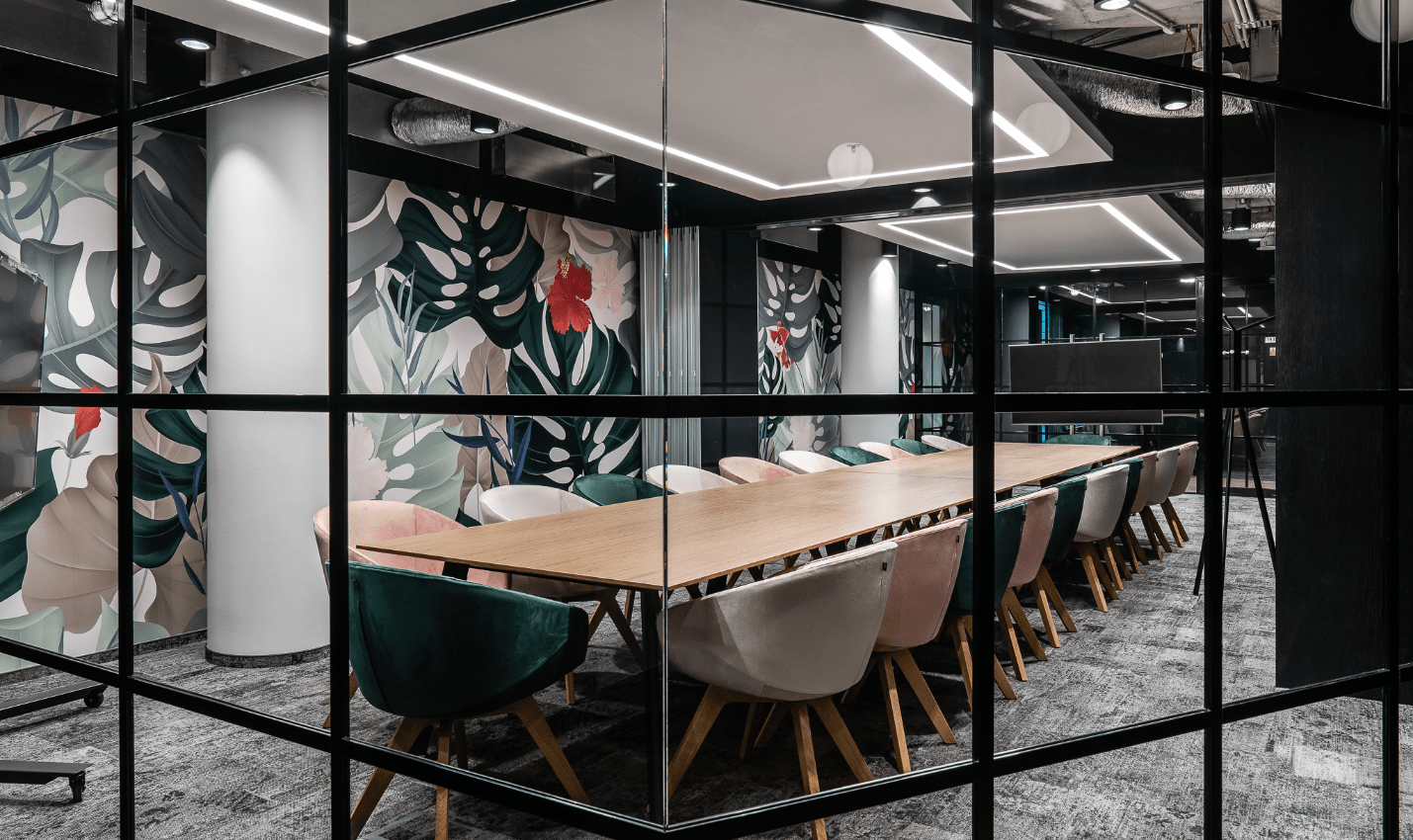
Jak wszyscy wiemy, dla każdego z nas „dobry” może oznaczać coś zupełnie innego. To kwestia naszych osobistych upodobań, kondycji osobowości i charakteru. Dynamiczny rozwój przestrzeni biurowych rodzi coraz więcej pytań o to, jak właściwie powinna wyglądać przyjazna przestrzeń dla każdego.
Jak pogodzić sprawną komunikację między zespołem i potrzebę prywatności poszczególnych pracowników. Otwarte czy zamknięte? Jaki wpływ na projektowanie przestrzeni biurowej ma potrzeba pracy hybrydowej?
Otwarcie
Historia otwartej przestrzeni biurowej sięga roku 1906, kiedy to architekt Frank Lloyd Wright pokusił się o tezę, że ściany i podział przestrzeni biurowej na pokoje właściwie nie służy niczemu dobremu. Uważał on, że otwarta przestrzeń biurowa sprzyja wyzwoleniu myśli, a także pozwala pozbyć się granic między pracownikami. Nowatorskie podejście do aranżacji biur zmieniło się w 1950 roku za sprawą niemieckiej grupy architektonicznej Quickborner. Zaproponowali oni oddzielenie od siebie poszczególnych biurek małą ścianką. Była to namiastka prywatności i zapewniała choć minimalny, ale jednak komfort pracy.
W Polsce początek takiego aranżowania przestrzeni biurowej to lata 90. XX wieku, kiedy to zawitały do nas duże międzynarodowe korporacje. Wraz z ich przybyciem zmieniło się dotychczas znane postrzeganie biur. To właśnie w tym czasie pojawiły się również szklane ściany działowe w biurach.
Otwarta przestrzeń biurowa miała przynieść w większości korzyści dla pracowników. Zapewne sprzyja ona luźnej wymianie myśli oraz pracy w grupie. Usprawnia komunikację i relację między pracownikami. Narzuca jednak każdemu pracownikowi te same warunki pracy. Związane jest to z temperaturą, ilością i źródłem światła, oraz tym z czym radzimy sobie najgorzej – hałasem.
Podejście do aranżacji przestrzeni biurowej dynamicznie zmienia się na przestrzeni lat. Bez względu na trendy architektoniczne czy też wyznaczniki estetyczne biura powinny spełniać jedną podstawową zasadę, powinny być przyjazną przestrzenią wspierającą funkcjonowanie pracowników.
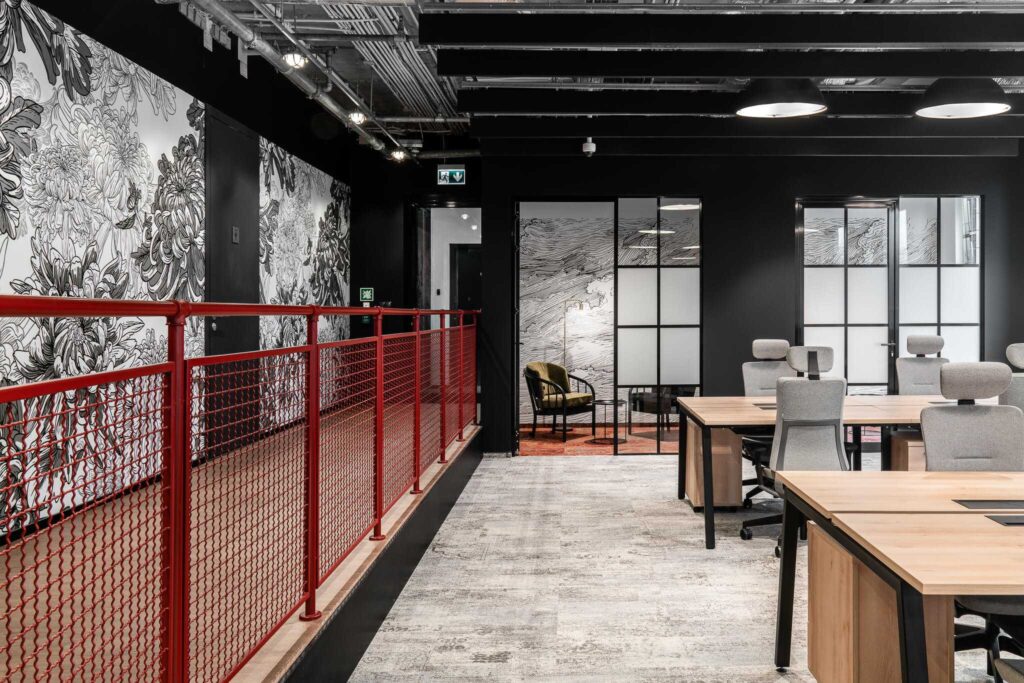
Badania nad komfortem
Badania z zakresu komfortu pracy w otwartej przestrzeni niejednokrotnie zostały przeprowadzone w Holandii. Tamtejsi naukowcy potwierdzili fakt, że takie wnętrze nie sprzyja twórczej pracy. Udokumentowali oni to co pracownicy open space wiedzą nie od dziś – odgórne ustawienie temperatury, poziomu światła i natężenie dźwięków w biurach otwartego planu nie służą nikomu. Przy popularności tego typu biur zdarza się, że jakiekolwiek zmiany bezpośrednie wpływających na pracownika warunków pracy nie są możliwe. Bez wątpienia pracownicy nie mający możliwości modyfikowania warunków pracy, działają mniej produktywnie.
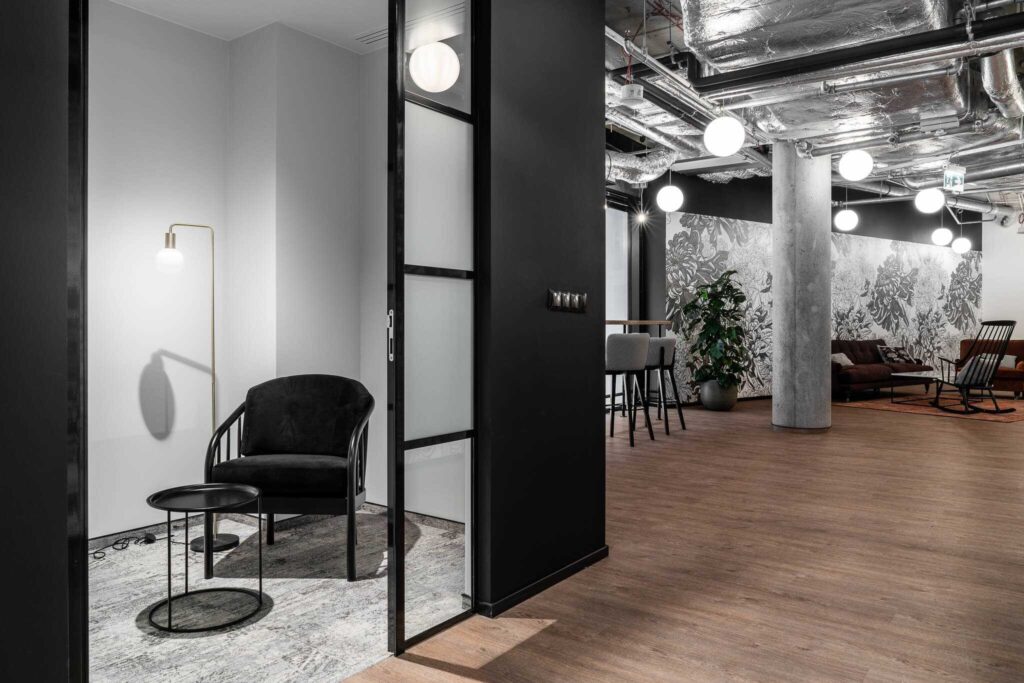
Nowe standardy
Zupełnie nowa rzeczywistość pracy biurowej wywołana pandemią narzuciła nam wkroczenie w odmienną jak dotąd rzeczywistość. Działanie hybrydowe przyzwyczaiło pracowników do pracy we własnych czterech kątach, które zapewniają komfort i poczucie prywatności. Powrót z takiej rzeczywistości do klasycznej pracy w biurze okazał się wyzwaniem nie tylko dla pracowników, ale również dla zarządców przestrzeni biurowej.
Badania z zakresu proksemiki pomagają w przejściu procesu adaptacji do radykalnych zmian dotyczących przestrzeni osobistej po powrocie do biura. Nauka ta warunkuje wzajemny wpływ relacji przestrzennych między osobami oraz między osobami, a otoczeniem materialnym na relacje psychologiczne. W aktualnej sytuacji konieczne jest przedefiniowanie naszego rozumienia przestrzeni osobistej – zarówno naszej własnej, jak i naszej w stosunku do innych.
Konieczne jest zadbanie o odpowiednie dystanse personalne w taki sposób by biuro sprzyjało wszystkim jego użytkownikom.
Warto również pamiętać o tym, że biura to przestrzeń, w której spotykają się różne typy osobowości od wycofanych introwertyków po radosnych ekstrawertyków.
To właśnie dla tej ostatniej osobowości biura typu open space są idealnym rozwiązaniem. Specjaliści wskazują zalety tego typu rozwiązań w przypadku osób, które czerpią energię z kontaktu z innymi. Introwertycy jednak potrzebują przestrzeni indywidualnej. Stałe obcowanie z innymi pracownikami sprawia, że szybko są zmęczeni nie tylko fizycznie, ale przede wszystkim psychicznie, co za tym idzie efektywność ich pracy jest minimalna.
Śmiałym i zapewne korzystnym rozwiązaniem dla obu grup jest podział przestrzeni. Jakie rozwiązania wybrać by było one jak najlepiej dopasowane do potrzeb użytkowników biur?
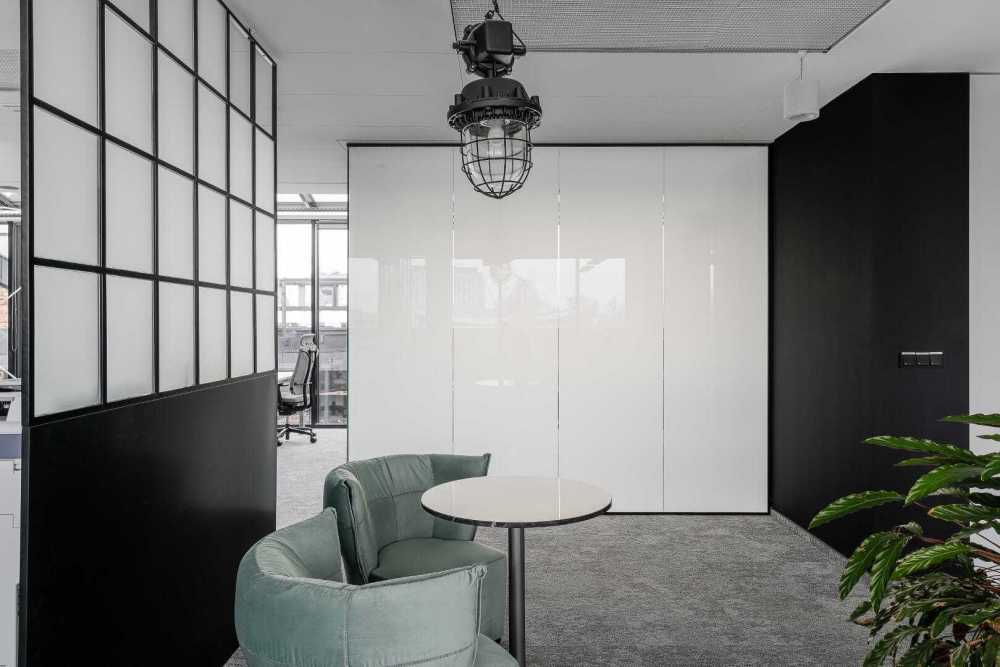
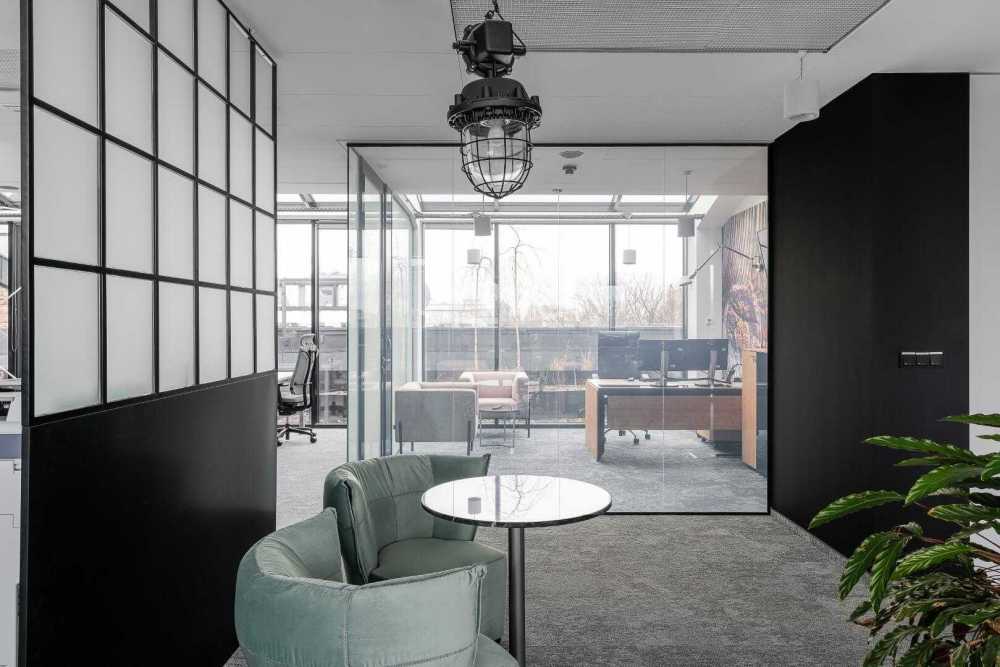
Rozmowa to nie wszystko
Odpowiednia izolacyjność akustyczna jest koniecznością nie tylko w przypadku rozmów telefonicznych. Zapewne trudno wyobrazić nam sobie biuro open space, w którym każdy pracownik wykonuje swoją pracę zupełnie bezszelestnie, jest to zwyczajnie niemożliwe. Natłok dźwięków wygenerowanych przez cały zespół rozprasza zapewne nie jednego introwertyka, a czasem nawet i ekstrawertyka. Bez względu na osobowość, każdy z nas ma czasem jedną wspólną potrzebę. Potrzebę ciszy, w której wręcz słyszymy własne myśli. Element ten zagwarantowany jest w przypadku, w którym wielkopowierzchniowe biura podzielone zostaną za pomocą szklanych ścianek działowych. Trzy systemy ścianek oferowane przez CreoConcept, zapewniają Izolacyjność akustyczną nawet do RW 52dB. W takich warunkach, każda osoba znajdzie przestrzeń na pełne skupienie zapewniające efektywną pracę.

Funkcjonalny podział przestrzeni
W CreoConcept jesteśmy zwolennikami tych rozwiązań, które są gwarantem nie tylko najwyższej jakości, ale przede wszystkim zapewniają wysoki komfort użytkownikom. Każda przestrzeń biurowa rządzi się swoimi prawami. Często stały podział przestrzeni zwyczajnie jest niemożliwy. Co wtedy? W tym przypadki najlepiej sprawdzą się mobilne ściany działowe. Rozwiązanie to pozwala na sprawny podział dużej przestrzeni, ale co ważniejsze nie jest elementem stałym, dlatego też pomieszczenie nabiera cech wielofunkcyjnego. Ściany wykorzystywane są jako element dzielący duże sale konferencyjne, bądź inne otwarte przestrzenie w sposób wyjątkowo praktyczny, zapewniający komfortowe warunki akustyczne i wysokie standardy estetyczne.
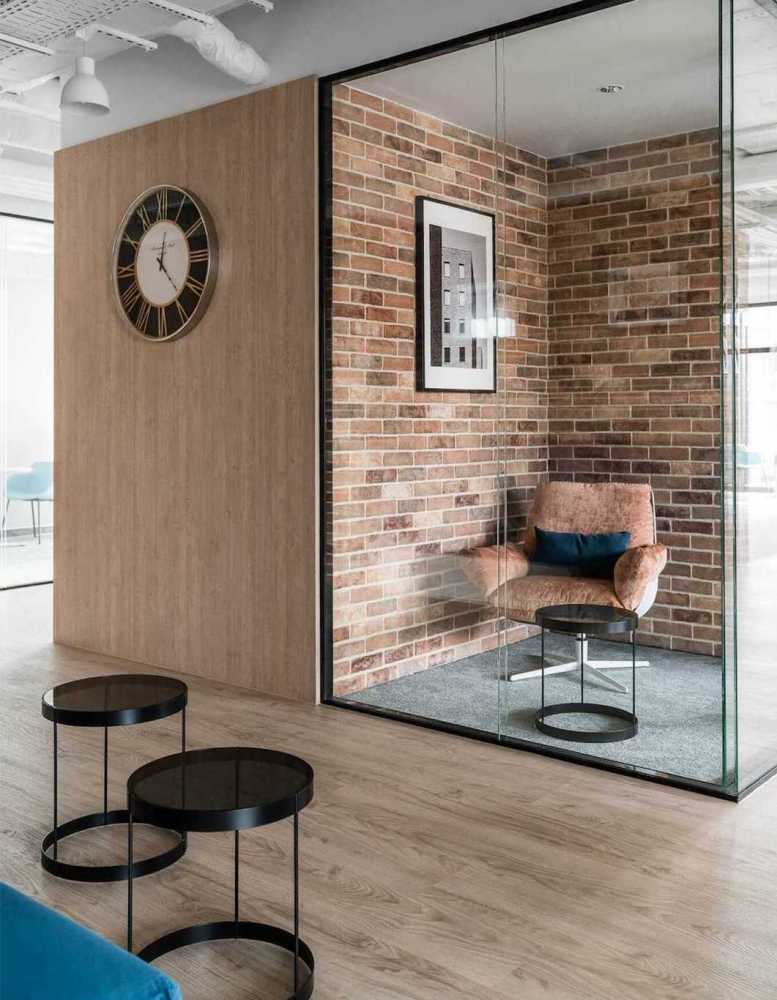
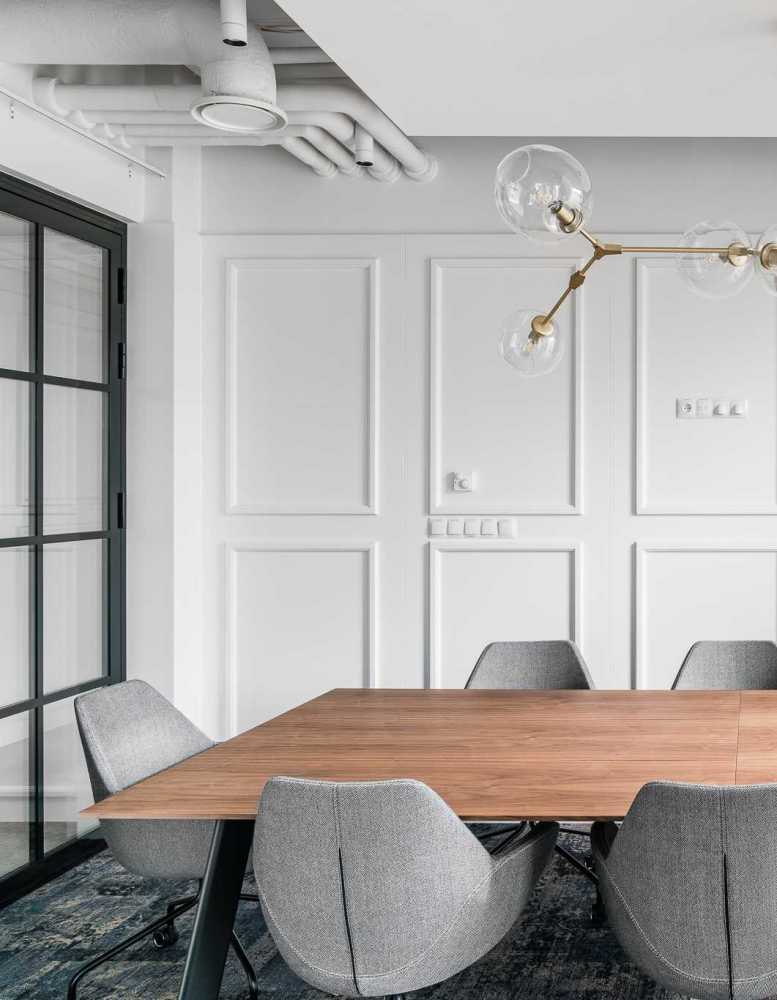
Szklane ścianki działowe to praktyczne rozwiązanie idealnie wpisujące się w najnowsze trendy architektoniczne. Przezierne szkło gwarantuje nam piękny przepływ światła w pomieszczeniu i ma ogromne zalety wizualne, nie gwarantuje jednak prywatności w wydzielonym pomieszczeniu. CreoConcept oferuje rozwiązanie łączące oba aspekty. Każdy z naszych systemów wzbogacony może zostać o wyjątkowo atrakcyjne rozwiązanie technologiczne jakim jest folia Optitec.
Wykorzystuje ona warstwę ciekłokrystaliczną, która zmienia właściwości optyczne. We wnętrzu folii znajdują się ciekłe kryształki, które w normalnych warunkach mają nieregularną strukturę, przez co utrzymuje ona kolor mleczno-biały. Wystarczy aktywować jej działanie za pomocą impulsu elektrycznego uruchamianego pilotem bądź specjalną aplikacją, folia staje się wtedy zupełnie przezierna lub nieprzezierna.
Folia ta gwarantuje nam szeroki zakres zastosowań. Bez wątpienia idealnie sprawdza się jako element nadający wnętrzu prywatny charakter i indywidualny design. Rozwiązanie to dopełnia również każdą przestrzeń szkoleniową ponieważ doskonale sprawdza się w formie ekranu projektowego.
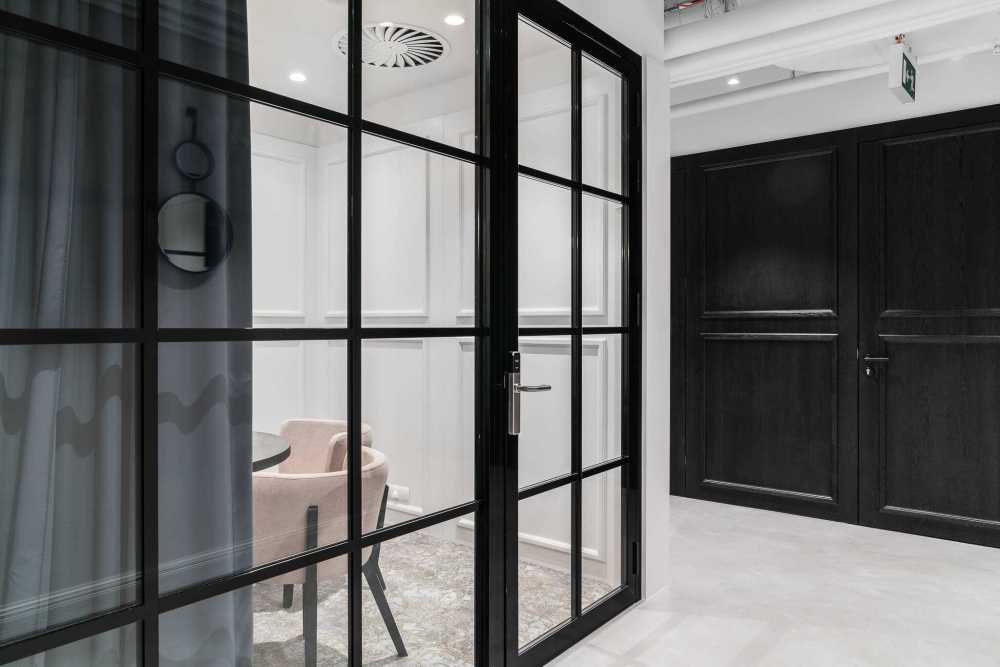

Wiele rozwiązań jeden cel
CreoConcept to wiele biurowych rozwiązań, które posiadają jedną wspólną cechę – komfort. Najważniejsze jest dla nas kreowanie biur sprzyjającym pracy. Nasze działania determinowane są przez wnętrza wielofunkcyjne, w których głównym wyznacznikiem aranżacji jest człowiek.
Think Creo.
